If there is one tool that you can bet every single prepper will dependably carry no matter where they live, no matter what they do and no matter where they are going, it is the humble knife.
The knives that preppers carry will run the gamut from compact, sleek and unassuming tactical edc pens, up to aggressive-looking clip-on folding knives, hulking fixed blade bushcraft or field knives, and everything else in between.
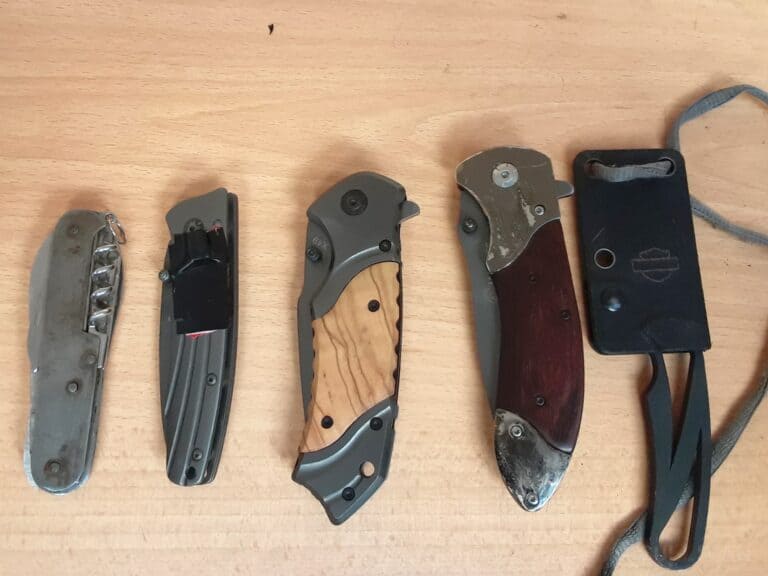
You don’t need a good reason to carry a knife; the knife is the reason and everybody who carries one can come up with dozens of tasks for it on any given day. But perhaps different from run-of-the-mill people, preppers carry knives to be ready for extreme situations, just in case.
Far be it from simply opening packages or cutting twine, the knife a prepper carries might very well be called on to slice a jammed seat belt, cut free entangling rope or ventilate a mugger’s lungs. The knife a prepper carries is equal parts mundane tool, emergency implement and defensive weapon.
It is for this reason that serious preppers should consider the carry of two knives as part of their EDC compliment- one for everyday chores, and the other reserved for the most serious of tasks. In this article I will make a case for doing just that.
That One Problem with That One Trusty Knife
In all of my travels, it rarely fails that an individual who chooses to carry a knife will sort of fall in love with what I call “that one pocket knife” (or belt knife, if you prefer) that they simply like carrying above all others.
Perhaps it has sentimental value. Perhaps they have just carried it so long they have grown highly accustomed and attached to it.
They might like how it looks, how it handles, or some other essential characteristic of the knife. The point of it is, if you’ll pardon the pun, is that it is their knife and the one they carry pretty much around the clock.
I do the same thing, as do you, probably. If a person you are talking to about their knife is a prepper and you ask them what they will do with it and why they carry it the answer is usually something along the lines of generally being “ready”, and I don’t mean ready to open the mail or slice an apple.
“Ready to take care of business” is what they are referring to in one way or another. That is a good answer, and I am happy to hear it.
But there is an issue with this thinking, in that, as a rule, most people will use that one EDC knife that they carry for all tasks, great and small.
While that knife might be waiting patiently for the day that it gets put to work in some important and life-saving task, it is also being used to cut twine, saw through rope, trim fingernails, hack through cardboard, dig, poke, pry, whittle, and a hundred other typical tasks that any EDC knife is expected to accomplish.
As a result, the knife will invariably dull. The blade and edge geometry has nothing to do with it, nor does the quality of the steel: Knives that get used will dull over time, and must be sharpened in order to restore the keenness of the cutting edge.
Therein lies the rub. The vast majority of people, and that includes preppers, are fairly lackadaisical when it comes to keeping their knives sharp.
Now, with a dull knife riding on their hip or in their pocket, the fateful day arrives. The knife is called upon, and the outcome might be in jeopardy because the tool has been neglected!
Only Sharp Knives are Ready for Serious Business
No amount of frenzied sawing using a dull knife will be as quick, certain and efficient as cutting cleanly with one that has been sharpened to a hair-popping edge. A sharp knife is better, a dull knife is worse. The end.
A sharp knife is also safer, as many of us learned when we were children, upon being gifted our very first knives from a family member. A knife that is sharp is far easier to control while it does work than one that has been dulled, and requires ever greater force exerted by the wielder.
If you are serious about maintaining a high level of personal readiness, this also means that your tools must be kept in a correspondingly high state of function with continual ongoing maintenance.
This means that if you are using your knife regularly you must be sharpening it regularly and maintaining the point. Sharpening is not fun; it is a chore. But if all you carry is a single blade, it must be done regularly, else your knife will degrade to near uselessness.
Now, contemplate a scenario where you have to use your knife in a time-is-life situation. One altogether too common situation (and one of the personal reasons that I keep a razor-sharp knife on me at all times) is cutting away a stuck seat belt after a crash.
Contemplating the horrible fate of being trapped inside a burning car because I could not quickly and cleanly slice away the seat belt thanks to my dull pocket knife is too awful to imagine. I might say the same about being trapped in a car quickly sinking in a body of water.
How about an oft-imagined instance of violent attack by one of the degenerate and ruthless members of society?
In a situation where you do not have a firearm on you, or cannot access it safely, a knife is an extremely efficient close-quarters weapon that can be used to excellent-if-grisly effect with very little training. That is, it can if it is sharp and properly pointy.
A dull knife with a blunted tip will not slice and pierce effectively, hampering its ability to inflict meaningful damage to your attacker.
A knife often faces obstacles in the form of clothing, sometimes multiple heavy layers of clothing before it can pierce or cut flesh. That is an obstacle a dull knife will struggle mightily with.
Here are just a few instances where a sharp blade will help you succeed, and a dull one will let you down:
- Cutting away a jammed seatbelt after a crash.
- Slicing laces/footwear/clothing away to deal with a sprain, dislocation or break.
- Clearing instantly a badly fouled line or cord.
- Cutting heavy, durable rope or hose.
- Puncturing rigid containers.
- Loosing an entanglement/drowning hazard when in or over water.
- Any self-defense situation.
So, it seems a knife-carrier is faced with a choice: Stay on top of keeping your favorite EDC knife sharp, or carry a second, “special purpose” knife to complement it.
Two Knives for a Happier Life
If you are smart and serious about personal readiness, you will carry a dedicated second blade that is only for emergencies where seconds count and serious cutting power matters.
You can call this second knife whatever you want: Knife No.2, the Business Blade, whatever. What is important is that you abide by the tenet that it never, ever comes out unless it is to perform in an emergency.
Think of it akin carrying a pistol. Is there ever a situation in which you pull out your pistol for no good purpose? I would hope not, in any setting! If a loaded gun comes out, it is about to do work.
Treat the second knife exactly the same: even if it is more convenient, even if it is a little quicker, you don’t use it for any tasks except those emergency tasks I have mentioned.
It doesn’t open boxes, it doesn’t open mail. You don’t pick your nails with it to look like some kind of hard ass. It stays folded or sheathed waiting patiently to do its job. That’s it.
The purpose of all this, naturally, is that that knife will retain its sharpness, and so will work more efficiently than your “utility” knife.
Let us look at things practically: it really doesn’t make much difference if I have to do a little bit of the old back and forth with my Swiss Army knife to cut a thicker piece of twine, or tease open an envelope.
At worst it is an annoyance, at best it is an extra second or two. You cannot say the same about dealing with an in-your-face attacker who’s trying to rob or kill you. Just like you need your gun to work without fail when it gets into action, you need your knife to do the same thing.
And let’s be real for a moment. Since you have a knife dedicated for these “serious social purposes” that will not require any more regular maintenance than an occasional wiping down with oil in order to prevent corrosion, it doesn’t really matter so much if you are a little tardy on sharpening your other “basic” knife.
Of course you should still sharpen it regularly; take care of your tools and they will take care of you. But this knife has now been relegated to the status of a true utility tool; it is not the end of the world if it is not scary sharp.
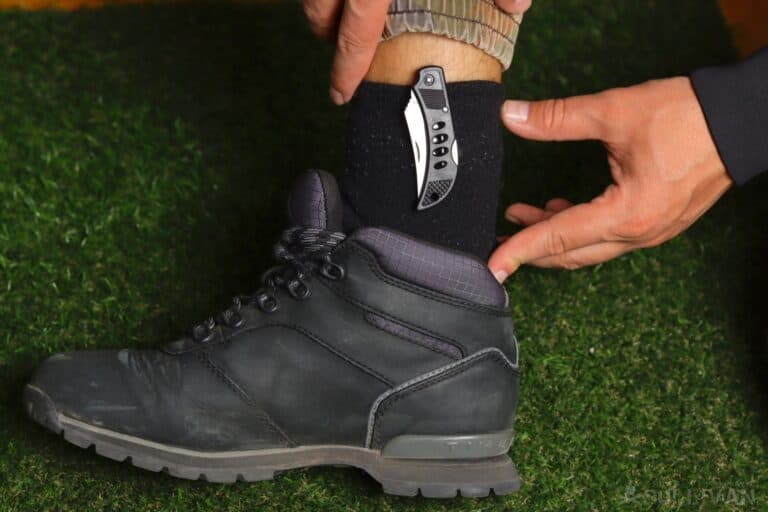
The Potential Social Cost of Carrying Only One Knife
Here is another snag associated with carrying a single blade that likely applies to you. Be honest: How many of us carry a bulky, aggressive-looking tactical folding knife because it is the best do-all option for both utility and defensive purposes? I would say probably a fair few of us.
The traditionalist knives of yesteryear- the Swiss Army knives, the Case knives, classic gentleman’s knives and others- are seen as not “serious” enough by some preppers and other of a defensive bent to warrant carrying. After all, you have to be ready, and so does your knife.
That thinking has a social penalty: your appearance and, by extension, your gear says a lot about you and what you believe to the people around you, and don’t delude yourself thinking otherwise.
If you whip out a four or five inch, wicked-looking tactical folder, or some O.S.S. repro dagger to break down a box or scribe a marking, “normal Earth people” will take notice and start making decisions about you.
It would be less obtrusive and raise no eyebrows if instead you were to perform the same task with a common “friendly” knife that people are more likely to associate with friendly grandpas and fond memories.
This can extend to informing the bad guys’ opinion of you, and not in a good way.
By choosing to carry a really serious knife for really serious purposes we are freed up mentally, in a way, to carry a compact, lightweight utility knife that can be totally unsuited for self-defense without feeling like we are compromising our capability.
We have one for chores, and one for “real” work! I myself often carry a tiny Swiss Army knife for this purpose, and either a tactical folder or slender fixed blade for my second “serious” knife.
In the following sections I will give you some more considerations as to what type of knife you should carry as your second blade and where you should carry it.
Knife Selection Considerations
The two biggest gripes I hear when I recommend carrying two knives to people is that they don’t want to carry two of the same knife, or they don’t want the extra weight, bulk and noise of having an extra piece of steel somewhere on their body.
The good news for them and for you, reader, is that carrying a second knife is virtually a non-issue if you carry it according to the recommendations I laid out above.
First things first, you don’t have to carry a duplicate knife unless you really, really want to. In fact, you’re probably losing the advantages of this methodology if you choose to carry a duplicate.
You’ll either be carrying two smaller utility knives that is not ideal for self-defense or hard work, or you’ll be carrying two knives designed to be used for defense, which will still be host to all the disadvantages discussed previously.
If I’m going to take the time to carry two knives I want to carry a knife that will cover the shortcomings of its sibling without weighing me down, slowing me down or making me look like I have “pocket cancer” since I already carry a ton of equipment day to day.
Consult the following to help you prioritize your knife selection correctly:
- “Serious” Knife Selection Criteria
- Durable.
- Holds keen edge.
- Handle size adequate for heavy-duty use.
- Preferably fixed blade, sturdy folder as alternate.
- Emergency Equipment: Must be able to be carried every, single day!
- “Utility” Knife
- Anything goes as long as you are happy carrying it!
- I recommend a small, “innocent” looking knife for public use.
As far as figuring out the gear train goes, this is a pretty simple puzzle to solve! You should base your knife selection around the best serious knife that suits your purposes.
That is ultimately the one that is most important, so that is the one you must be able to carry no matter what.
Once you have that sorted out, you can pick any utility knife that you can live with. The sky is truly the limit here! If you don’t care about the extra weight and bulk, you can carry a larger knife, it doesn’t matter.
If you want to keep your profile as lean and light as possible, you are now free to carry an ultra-compact, flyweight knife that you can stash anywhere.
Disclosure: This post has links to 3rd party websites, so I may get a commission if you buy through those links. Survival Sullivan is a participant in the Amazon Services LLC Associates Program. As an Amazon Associate, I earn from qualifying purchases. See my full disclosure for more.

Charles’ EDC Knife Setup
My serious business knife that I carry whenever I am able is CRKT Obake, a super slender fixed blade knife that deploys from a static line sheath. It is extremely easy to hide, easy to access, and weighs next to nothing while affording me significant cutting and piercing power.
This is a backup weapon to my pistol. It has proven plenty durable enough in my own testing to give me confidence, and is affordable enough that if I lose it or have to ditch it I’m not eating a significant financial penalty to replace it.
I carry this knife inside the waistband between 10- and 11- o’clock depending on what I’m doing. This allows me to access it with either hand and also sets me up for using it to defend against a pistol take away.
As an alternative to that knife, when a fixed blade is just not doable, I carry CRKT’s Hissatsu. It has a similar blade length and profile to the Obake, and once again has significant penetrative power.
I also like the oversized handle on this knife, something that is not so easy to find in a folding pocket knife in this size category.
Once again, my own testing has proven the knife sturdy and reliable, and it is not so expensive that if it is lost or thrown away for whatever reason I will be crying a river.
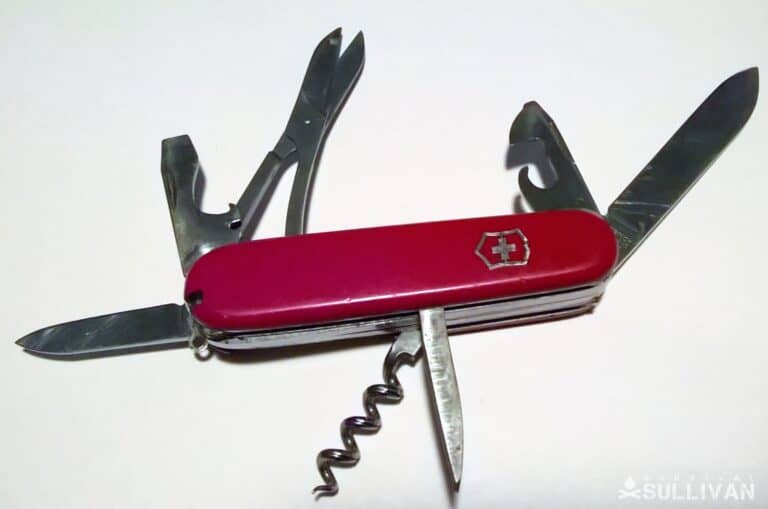
That brings me to my last knife, the utility blade, and one where we can have the most fun. My go-to utility knife is a classic Swiss Army knife, either one of the little bitty ones if I’m really dressed up, or the classic Tinker, which also doubles as my multi-tool.
Compared to a multi-plier, the “SAK” omits the pliers and overall is less capable, but I can take care of 90% of the tasks I would need a multitool for and it does so in a super lightweight, smooth and compact package that rides like a dream in my pocket. Sometimes the old ways are best.
And I hope that it is not lost on readers that the Swiss Army knife furnishes me three blades in one package: the full size blade, a smaller compact blade and an awl/reamer, the latter nominally used for punching holes but also very handy for scraping, prying and poking.
Again all of this in a package that does not burden me at all.
I Rest My Case…
Carrying a single knife as part of your EDC complement is fine if you are dedicated to keeping it sharp at all times. Failure to do so means you might be facing down an emergency or crisis situation with a dull blade when you can least afford it.
The solution is to carry two knives, one for mundane utility chores, and the other to handle emergency cutting tasks of all kinds, the latter being used only in those situations.
This methodology cost very little in terms of weight and space, but ensures you always have a sharpened blade at the ready when called for.
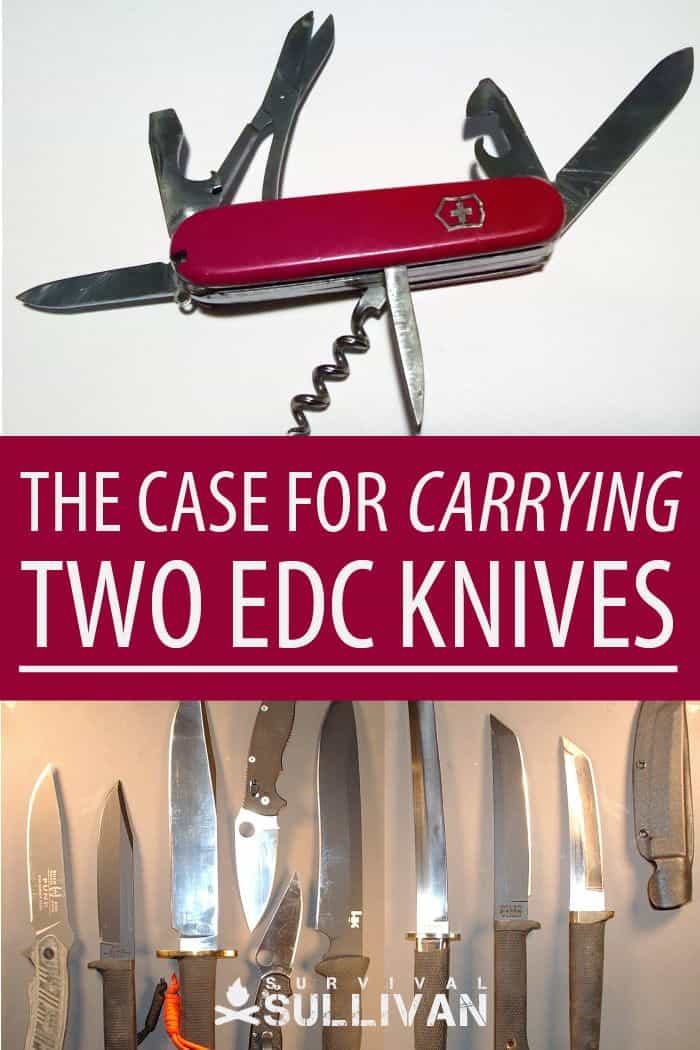
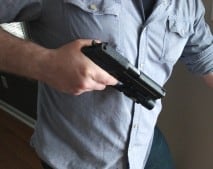
Charles Yor is an advocate of low-profile preparation, readiness as a virtue and avoiding trouble before it starts. He has enjoyed a long career in personal security implementation throughout the lower 48 of the United States.

Interesting food for thought. My concern is the legality of carrying and as mentioned the perceptions of others.
I’d love to carry a 3.5 or even a 4-6 inch fixed blade for emergencies or survival related purposes.
I have various folders, some compact and some with larger handles that allow a good grip. I feel the larger ones would be best for bigger tasks or self defense.